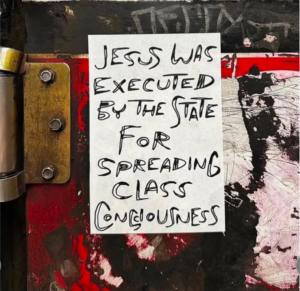
The issue we need to work with is recognizing that Christianity, like all major religions, has evolved over centuries, shaped by social, political, and cultural contexts. Early #Christians faced persecution and were marginalized groups. Their practices were aligned with the later written teachings of #Jesus which focused on community, charity, and non-violence. Though, even in these early years, there were conflicts and disagreements about interpretation of “Jesus’”teachings, you can see this in various New Testament letters.
The conversion of Emperor Constantine to Christianity and the subsequent Edict of Milan (313 AD) drastically changed the Christian landscape and shifted the beliefs. Christianity became the state religion of the Roman Empire, this led to increasing #burocracy of the Church, building religious authority with real power, which accelerated the shift away from the teachings of humility, poverty, and non-violence.
During the Middle Ages and the Crusades. The Church amassed huge power and wealth, leading to more corruption and practices starkly opposed to Christ’s teachings on poverty and humility. The Crusades (1096-1291) are an example where Christians engaged in warfare, motivated by a mix of religious zeal, political ambition, and economic gain, this clearly contradicted early Christ’s message of peace and love for enemies.
The Reformation (16th Century), led by Martin Luther and a widening group of reformers, was a hard knock back to the deep corruption and moral decay within the Roman Catholic Church. Thought aiming to return to a “purer” form of Christianity, the reformation instead led to religious wars and persecution between different Christian sects. European colonialism used Christianity as a justification for the conquest and subjugation of the wider world, peoples, directly opposing Christ’s teachings on love, justice, and respect for others.
Modern Christianity, today, is highly diverse, with some tiny groups like the Quakers closely adhering to Christ’s teachings of love, compassion, and justice, while others support policies and engage in behaviours that make a mockery of the simple truths and contradict these principles. Examples would be the prosperity gospel, political alignments that ignore any justice, and numerous sexual and money scandals within religious institutions, this highlight, the growing contradictions between professed beliefs and widespread actions.
These tensions always existed, Christians diverging from the teachings of Christ early in the history of the religion, this accelerated as soon as the movement adapted to larger and more burocratic communities. Over the centuries, the alignment between Christian institutions and political power has led to actions and policies that repudiate and contradict the core teachings. This divergence is not uniform, as there have always been small numbers of people and groups within Christianity striving to live according to the balance of Christ’s principles.

The tension between the ideal and the reality of Christian practice is currently a mess, with the hard shift to the right. A recurring theme in the history of the religion, you can see this in the BGP in India, the path is the same. Understanding this history can help people to step away from this mess to compost contemporary issues within the mess of faith paths.